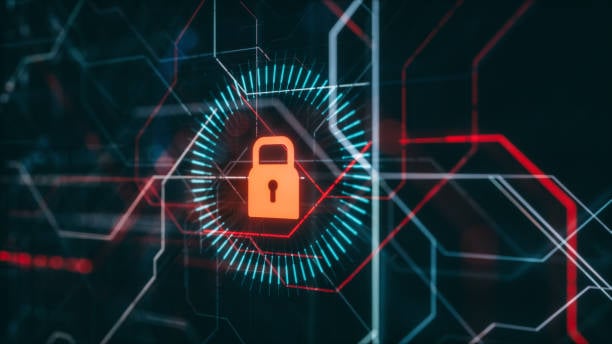Share this
What is FIPS 140-3?
by Christopher Trick on Oct 12, 2022 3:12:44 PM
With advanced cyberattacks on the rise, technology that handles and encrypts critical data must be secure and reliable at all times, at all levels.
In this blog, you'll learn more about FIPS 140-3, why it's important, and how it differs from FIPS 140-2 to enhance protection of data-at-rest, data-in-transit, and data-in-use.
What is FIPS 140-3?
Released in 2019, FIPS 140-3 (Federal Information Processing Standard 140-3) is the latest U.S. and Canadian co-sponsored security standard for hardware, firmware, and software solutions.
This standard is a benchmark for validating the effectiveness, security, and dependability of cryptographic hardware. So a FIPS 140-3-certified product has been formally tested and validated by both the U.S. and Canadian governments.
FIPS 140-3's predecessor, FIPS 140-2, has been adopted worldwide by government and non-government sectors as a standard cybersecurity best practice.
When FIPS 140-3 was released, a sunset period was announced for all FIPS 140-2 certificates. As of April 2022, FIPS 140-3 supersedes FIPS 140-2.
Who has to comply with FIPS 140-3?
Any entity that processes Sensitive But Unclassified (SBU) information relating to the federal government needs to comply with FIPS 140-3.
This ranges from third-party vendors, contractors, cloud technology providers, and any organization that provides solutions to be integrated within the federal government's SBU ecosystem.
Organizations that do not comply with FIPS 140-3 are at risk of being fined by NIST (National Institute of Standards and Technology).
Compliance with FIPS 140-3 has the added benefit of verification from a third party that all processes are operating as expected, avoiding interoperability and integration issues.
How is FIPS 140-3 different from FIPS 140-2?
The main differentiation between FIPS 140-2 and FIPS 140-3 is that FIPS 140-3 incorporates two existing standards with slight modifications.
Let's take a look at each:
ISO/IEC 19790:2012 - Security Requirements for Cryptographic Modules
This standard specifies the requirements for selecting, using, and managing cryptographic modules to improve the protection of sensitive resources; it also specifies four levels of security for each of the 11 requirements, where the degree of security increases as each level progresses.
ISO 24759:2017 - Test Requirements for Cryptographic Modules
This will become the derived testing requirement (DTR) for all testing labs. The methods outlined here specify objective test requirements to enforce a unified testing process across all testing laboratories.
What does this mean?
The requirements of both ISO/IEC 19790:2012 and ISO 24759:2017 are harmonized so that conformance to the testing standards outlined in ISO 24759:2017 demonstrate compliance with ISO/IEC 19790:2012.
FIPS 140-3 is now more closely aligned with ISO/IEC standard, so vendors and organizations will have an easier time upgrading to the new standards.
Other differences are outlined in the next section.
 Any entity that processes Sensitive But Unclassified (SBU) information relating to the federal government needs to comply with FIPS 140-3.
Any entity that processes Sensitive But Unclassified (SBU) information relating to the federal government needs to comply with FIPS 140-3.
What are the requirements of FIPS 140-3?
FIPS 140-2 only addresses security requirements after completion, but FIPS 140-3 now evaluates security requirements at all stages of cryptographic module creation--from design, implementation, and final operational deployment.
FIPS 140-3 has 11 derived test requirements (DTRs) detailing the requirements that need to be met in order to demonstrate conformance to the standard. Each requirement also describes the methods that the testing lab will take to test the module.
All requirements have been updated from the FIPS 140-2 versions:
Let's take a look at each:
- Cryptographic Module Specification: FIPS 140-3 defines five types of cryptographic modules or boundaries that can be validated: hardware module, firmware module, software module, hybrid-software module, and hybrid-firmware modules. Hybrid modules, which were restricted to Level 1 validations in FIPS 140-2, no longer have a level limitation.
- Software and Firmware Security: This is a new section that introduces Integrity Testing, but it does not apply to hardware-specific embodiments.
- Operational Requirements: This section has been updated to eliminate the need for software modules at Level 2 to be Common Criteria (CC) certified, but there are many new requirements that coincide with CC that must be addressed.
- Non-Invasive Security: This section outlines documentation and testing requirements for protecting the module from attacks performed in the absence of direct physical contact to components.
- Self-Tests: This section adds new requirements for Periodic Self-Tests and Conditional Fault Detection Tests, and it also renames Power On Self-Tests to Operational Self-Tests.
- Mitigation of Other Attacks: This section addresses any additional attack-preventing functionality that is not directly called out in previous test requirements.
- Cryptographic Module Interfaces: This section defines the interfaces or commands used by each module type. These new interfaces are: Hardware Module Interfaces (HMI), Software or Firmware Module Interfaces (SFMI), Hybrid-Software Module Interfaces (HSMI), and Control Output Interface.
- Roles, Services, and Authentication: The roles are: Crypto Officer, User, and Maintenance. (FIPS 140-3 only mandates a Crypto Officer.) The services are: show status, perform self-tests, perform approved security function, show modules versioning information, and perform zeroization. The authentication piece requires multi-factor authentication.
- Physical Security: Security can come in one of three forms: single-chip, multiple-chip, and multiple-chip standalone. There are additional requirements at Level 2, Level 3, and Level 4.
- Sensitive Security Parameter (SSP) Management: This section covers SSP input and output requirements at each level, including information on Random Bit Generation (RBG), CSP Encryption, and zeroization. New sections such as Critical Security Parameters (CSPs) and Public Security Parameters (PSPs) have been added here.
- Lifecycle Assurance: This section details security requirements on how the device was designed, developed, and is intended to operate; it also includes requirements for the module's end-of-life. In addition, the requirements from FIPS 140-2's section on Finite State Model (FSM) are included here.
What are the different levels of FIPS 140-3?
Within each of the 11 DTRs, there are four increasing qualitative security levels. At each level, greater amounts of evidence and engineering are needed to show a product's compliance with FIPS 140-3.
Let's take a look at the requirements of each level:
Level 1
- Validation of at least one approved algorithm or security function
- Production-grade evaluated components
Level 2
- All Level 1 requirements
- Role-base authentication and physical security requirements for tamper evidence
Level 3
- All Level 1 and 2 requirements
- Identity-based authentication, physical security mechanisms for tamper detection, and tamper response
- Physical or logical separation between interfaces by which Critical Security Parameters enter and leave the module. (Private keys can only enter and leave in encrypted form.)
- Module must detect and react to out-of-range voltage or temperature--also known as environmental failure protection, or EFP--or alternatively undergo environmental failure testing (EFT).
Level 4
- All Level 1, 2, and 3 requirements
- Increasingly stringent physical security mechanisms to detect and reply to tampering, including environmental attacks. (The contents of the device are deleted if any attack is detected.)
- Environmental failure protection, protection against fault injection, and multi-factor authentication.
 Within each of the 11 DTRs, there are four increasing qualitative security levels. At each level, greater amounts of evidence and engineering are needed to show a product's compliance with FIPS 140-3.
Within each of the 11 DTRs, there are four increasing qualitative security levels. At each level, greater amounts of evidence and engineering are needed to show a product's compliance with FIPS 140-3.
FIPS 140-3 and Trenton Systems
At Trenton Systems, our USA-made, high-performance computing solutions protect critical data at-rest, in-transit, and in-use across the hardware, firmware, software, and network stack with advanced, multi-layer cybersecurity technologies.
Our 5G-powered, edge compute systems can support both FIPS 140-2 and FIPS 140-3 self-encrypting drives (SEDs) to keep large amounts of sensitive information safe from unauthorized access and maintain operational integrity.
In both rack mount and small form factor, we customize our systems per our customers' most complex security requirements, incorporating next-gen SEDs from a variety of different manufacturers such as Micron and UDInfo.
Zero-trust architected with Intel® hardware-based security technologies like PFR, SGX, and TME, our solutions ensure that applications across the commercial, military, and industrial sectors are guarded against the most sophisticated of cyberattacks.
Final thoughts
With a heightened risk of cyberattacks and an increasingly interconnected technological ecosystem, protecting data-at-rest, data-in-transit, and data-in-use is of the utmost importance now more than ever.
Requiring organizations to meet FIPS 140-2 and FIPS 140-3 certification is a crucial step in ensuring the security, integrity, and functionality of applications across the government, military, and critical infrastructure landscape.
In partnership with Intel®, Trenton Systems stands at the forefront of developing critical, cybersecure mission computers to provide our warfighters with a strategic, tactical, and operational advantage.
Want to learn more about how you can construct a secure computing system with the latest encryption technologies? Just reach out us anytime here.
We'd be happy to help. 🙂 🇺🇸
Sources:Share this
- High-performance computers (42)
- Military computers (38)
- Rugged computers (32)
- Cybersecurity (25)
- Industrial computers (25)
- Military servers (24)
- MIL-SPEC (20)
- Rugged servers (19)
- Press Release (17)
- Industrial servers (16)
- MIL-STD-810 (16)
- 5G Technology (14)
- Intel (13)
- Rack mount servers (12)
- processing (12)
- Computer hardware (11)
- Edge computing (11)
- Rugged workstations (11)
- Made in USA (10)
- Partnerships (9)
- Rugged computing (9)
- Sales, Marketing, and Business Development (9)
- Trenton Systems (9)
- networking (9)
- Peripheral Component Interconnect Express (PCIe) (7)
- Encryption (6)
- Federal Information Processing Standards (FIPS) (6)
- GPUs (6)
- IPU (6)
- Joint All-Domain Command and Control (JADC2) (6)
- Server motherboards (6)
- artificial intelligence (6)
- Computer stress tests (5)
- Cross domain solutions (5)
- Mission-critical servers (5)
- Rugged mini PCs (5)
- AI (4)
- BIOS (4)
- CPU (4)
- Defense (4)
- Military primes (4)
- Mission-critical systems (4)
- Platform Firmware Resilience (PFR) (4)
- Rugged blade servers (4)
- containerization (4)
- data protection (4)
- virtualization (4)
- Counterfeit electronic parts (3)
- DO-160 (3)
- Edge servers (3)
- Firmware (3)
- HPC (3)
- Just a Bunch of Disks (JBOD) (3)
- Leadership (3)
- Navy (3)
- O-RAN (3)
- RAID (3)
- RAM (3)
- Revision control (3)
- Ruggedization (3)
- SATCOM (3)
- Storage servers (3)
- Supply chain (3)
- Tactical Advanced Computer (TAC) (3)
- Wide-temp computers (3)
- computers made in the USA (3)
- data transfer (3)
- deep learning (3)
- embedded computers (3)
- embedded systems (3)
- firmware security (3)
- machine learning (3)
- Automatic test equipment (ATE) (2)
- C6ISR (2)
- COTS (2)
- COVID-19 (2)
- CPUs (2)
- Compliance (2)
- Compute Express Link (CXL) (2)
- Computer networking (2)
- Controlled Unclassified Information (CUI) (2)
- DDR (2)
- DDR4 (2)
- DPU (2)
- Dual CPU motherboards (2)
- EW (2)
- I/O (2)
- Military standards (2)
- NVIDIA (2)
- NVMe SSDs (2)
- PCIe (2)
- PCIe 4.0 (2)
- PCIe 5.0 (2)
- RAN (2)
- SIGINT (2)
- SWaP-C (2)
- Software Guard Extensions (SGX) (2)
- Submarines (2)
- Supply chain security (2)
- TAA compliance (2)
- airborne (2)
- as9100d (2)
- chassis (2)
- data diode (2)
- end-to-end solution (2)
- hardware security (2)
- hardware virtualization (2)
- integrated combat system (2)
- manufacturing reps (2)
- memory (2)
- mission computers (2)
- private 5G (2)
- protection (2)
- secure by design (2)
- small form factor (2)
- software security (2)
- vRAN (2)
- zero trust (2)
- zero trust architecture (2)
- 3U BAM Server (1)
- 4G (1)
- 4U (1)
- 5G Frequencies (1)
- 5G Frequency Bands (1)
- AI/ML/DL (1)
- Access CDS (1)
- Aegis Combat System (1)
- Armed Forces (1)
- Asymmetric encryption (1)
- C-RAN (1)
- COMINT (1)
- Cloud-based CDS (1)
- Coast Guard (1)
- Compliance testing (1)
- Computer life cycle (1)
- Containers (1)
- D-RAN (1)
- DART (1)
- DDR5 (1)
- DMEA (1)
- Data Center Modular Hardware System (DC-MHS) (1)
- Data Plane Development Kit (DPDK) (1)
- Defense Advanced Research Projects (DARP) (1)
- ELINT (1)
- EMI (1)
- EO/IR (1)
- Electromagnetic Interference (1)
- Electronic Warfare (EW) (1)
- FIPS 140-2 (1)
- FIPS 140-3 (1)
- Field Programmable Gate Array (FPGA) (1)
- Ground Control Stations (GCS) (1)
- Hardware-based CDS (1)
- Hybrid CDS (1)
- IES.5G (1)
- ION Mini PC (1)
- IP Ratings (1)
- IPMI (1)
- Industrial Internet of Things (IIoT) (1)
- Industry news (1)
- Integrated Base Defense (IBD) (1)
- LAN ports (1)
- LTE (1)
- Life cycle management (1)
- Lockheed Martin (1)
- MIL-S-901 (1)
- MIL-STD-167-1 (1)
- MIL-STD-461 (1)
- MIL-STD-464 (1)
- MOSA (1)
- Multi-Access Edge Computing (1)
- NASA (1)
- NIC (1)
- NIC Card (1)
- NVMe (1)
- O-RAN compliant (1)
- Oil and Gas (1)
- Open Compute Project (OCP) (1)
- OpenRAN (1)
- P4 (1)
- PCIe card (1)
- PCIe lane (1)
- PCIe slot (1)
- Precision timestamping (1)
- Product life cycle (1)
- ROM (1)
- Raytheon (1)
- Remotely piloted aircraft (RPA) (1)
- Rugged computing glossary (1)
- SEDs (1)
- SIM Card (1)
- Secure boot (1)
- Sensor Open Systems Architecture (SOSA) (1)
- Small form-factor pluggable (SFP) (1)
- Smart Edge (1)
- Smart NIC (1)
- SmartNIC (1)
- Software-based CDS (1)
- Symmetric encryption (1)
- System hardening (1)
- System hardening best practices (1)
- TME (1)
- Tech Partners (1)
- Total Memory Encryption (TME) (1)
- Transfer CDS (1)
- USB ports (1)
- VMEbus International Trade Association (VITA) (1)
- Vertical Lift Consortium (VLC) (1)
- Virtual machines (1)
- What are embedded systems? (1)
- Wired access backhaul (1)
- Wireless access backhaul (1)
- accredidation (1)
- aerospace (1)
- air gaps (1)
- airborne computers (1)
- asteroid (1)
- authentication (1)
- autonomous (1)
- certification (1)
- cognitive software-defined radios (CDRS) (1)
- command and control (C2) (1)
- communications (1)
- cores (1)
- custom (1)
- customer service (1)
- customer support (1)
- data linking (1)
- data recording (1)
- ethernet (1)
- full disk encryption (1)
- hardware monitoring (1)
- heat sink (1)
- hypervisor (1)
- in-house technical support (1)
- input (1)
- integrated edge solution (1)
- international business (1)
- licensed spectrum (1)
- liquid cooling (1)
- mCOTS (1)
- microelectronics (1)
- missile defense (1)
- mixed criticality (1)
- moving (1)
- multi-factor authentication (1)
- network slicing (1)
- neural networks (1)
- new headquarters (1)
- next generation interceptor (1)
- non-volatile memory (1)
- operating system (1)
- output (1)
- outsourced technical support (1)
- post-boot (1)
- pre-boot (1)
- private networks (1)
- public networks (1)
- radio access network (RAN) (1)
- reconnaissance (1)
- rugged memory (1)
- secure flash (1)
- security (1)
- self-encrypting drives (SEDs) (1)
- sff (1)
- software (1)
- software-defined radios (SDRs) (1)
- speeds and feeds (1)
- standalone (1)
- storage (1)
- systems (1)
- tactical wide area networks (1)
- technical support (1)
- technology (1)
- third-party motherboards (1)
- troposcatter communication (1)
- unlicensed spectrum (1)
- volatile memory (1)
- vpx (1)
- zero trust network (1)
- January 2025 (1)
- November 2024 (1)
- October 2024 (1)
- August 2024 (1)
- July 2024 (1)
- May 2024 (1)
- April 2024 (3)
- February 2024 (1)
- November 2023 (1)
- October 2023 (1)
- July 2023 (1)
- June 2023 (3)
- May 2023 (7)
- April 2023 (5)
- March 2023 (7)
- December 2022 (2)
- November 2022 (6)
- October 2022 (7)
- September 2022 (8)
- August 2022 (3)
- July 2022 (4)
- June 2022 (13)
- May 2022 (10)
- April 2022 (4)
- March 2022 (11)
- February 2022 (4)
- January 2022 (4)
- December 2021 (1)
- November 2021 (4)
- September 2021 (2)
- August 2021 (1)
- July 2021 (2)
- June 2021 (3)
- May 2021 (4)
- April 2021 (3)
- March 2021 (3)
- February 2021 (8)
- January 2021 (4)
- December 2020 (5)
- November 2020 (5)
- October 2020 (4)
- September 2020 (4)
- August 2020 (6)
- July 2020 (9)
- June 2020 (11)
- May 2020 (13)
- April 2020 (8)
- February 2020 (1)
- January 2020 (1)
- October 2019 (1)
- August 2019 (2)
- July 2019 (2)
- March 2019 (1)
- January 2019 (2)
- December 2018 (1)
- November 2018 (2)
- October 2018 (5)
- September 2018 (3)
- July 2018 (1)
- April 2018 (2)
- March 2018 (1)
- February 2018 (9)
- January 2018 (27)
- December 2017 (1)
- November 2017 (2)
- October 2017 (3)
/Trenton%20Systems%20Circular%20Logo-3.png?width=50&height=50&name=Trenton%20Systems%20Circular%20Logo-3.png)

No Comments Yet
Let us know what you think